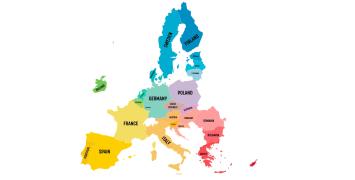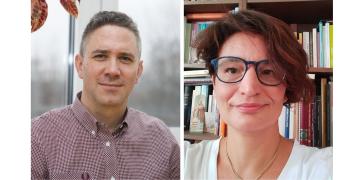
Jacek Kuźnicki, biochemist and former President of the scientific council of the Polish National Science Centre, gives his views on what could be done to improve the success rates of applicants from widening countries.
This title “Equal rights, unequal chances” is one of a few statements I made during the conference organized by the European Commission on “Research connections” in Prague during May 2009. I shared my thoughts on the disparities between scientists from new member states (NMSs) and old member states (OMSs) within the European Union (EU). I expressed the need for a new plan, similar to the Marshall Plan, to create a more balanced and sustainable European Research Area (ERA). Unfortunately, no such plan was introduced, and good programs like Centers of Excellence, or regulations in the 4th and 5th European Framework Programmes for Research and Innovation (the EU’s main instruments for implementing its common scientific and innovation policy) were discontinued.
In the following 14 years, we continued to discuss how to increase the participation of scientists from NMSs and other Scientifically Less Developed Regions (SLDRs) in EU programs. The situation has worsened, becoming a severe threat. Without sufficient EU support, researchers from NMSs may turn to other scientific powerhouses, such as the UK, the US, and China, fuelling anti-EU movements in NMS countries.
Despite the good intentions behind EU research programs, they have yet to build an integrated ERA, and all scientists in Europe stand to lose if the situation persists. The SDLRs will continue to lose “brains”. Excellent scientists will continue to move to the West, likely leading to the deterioration of the level of science in the South and East. This will decrease the quality of Master’s and PhD education in these regions, and OMSs will also lose because the source of highly qualified researchers coming as PhD students and postdocs will disappear.
Identifying significant difficulties and obstacles faced by SLDRs is crucial, as well as proposing ways to improve their research status. The major problems include unbalanced research levels and infrastructure, differing economic and political situations making jobs in OMSs more attractive (and also giving researchers better career prospects after working in OMS institutions), brain drain, prejudices against cooperation, and self-centred policies.
Solutions to these problems are complex and may be difficult to implement. However, I propose the following actions to increase the participation of scientists from SLDRs in EU scientific programs:
- Allocate about 10% of funds to researchers from SLDRs in funded projects, including ERC and MSCA Postdoctoral Fellowships.
- Require that at least 10% of consortium funds go to SLDR researcher(s) as regular partners.
- Allow the addition of a partner from SLRDs with additional funds - after positive evaluation and before signing agreements.
- Create special calls for balanced consortia[1] and REGPOT-like calls[2] targeted at SLDRs.
- Generate more calls to fund basic research, and remove requirements to include SMEs in consortia.
- Eliminate salary inequalities between NMSs and OMSs in EU programs.
- Expand ERA-Chair-like programs to support mobility of excellent researchers from the West to the South and the East. To allow further movement within the EU, provide them with additional funding after they complete the five-year programme.
- Establish up to 100 new institutions in countries with low success rates, centred around excellent scientists with substantial 10-year funding.
In conclusion, the ERA requires significant reconstruction, with a focus on researcher mobility to SLDRs. Regulations for all EU science-financing programs should include a 10% quota[3] for scientists from SLDRs. With appropriate local and national policies, this will have a significant impact on creating an integrated ERA without affecting the quality of EU-funded research. To become the world's leading innovative force, the EU must utilize the full potential of all member states, for the benefit of all.
Bio
Jacek Kuznicki was head of the Laboratory of Neurodegeneration at the International Institute of Molecular and Cell Biology (IIMCB) in Warsaw, Poland. From 2000-2018 he served as Director of the IIMCB. He is also Head of Laboratory at the Nencki Institute of Experimental Biology. Currently an ordinary member of the Polish Academy of Sciences, he was a member of the Polish National Science Centre’s Council (2018-2022), and also served as its President from 2022-2022. Originally gaining a PhD in biochemistry, his research interests are focused on neurodegenerative diseases, such as Alzheimer’s, Parkinson’s and Huntington’s diseases, calcium dyshomeostasis and the role of STIM proteins in store-operated calcium entry (SOCE) in neurons.
[1] Even number of partners from NMSs and OMSs.
[2] This FP5 call was to improve the links between outstanding research centres in the ten New Members and other European research centres through networking, exchanges, training, and twinning activities. Eighteen Centres of Excellence were funded, which integrated well into the European Research Area and cost the EC only six million euro.
[3] Between 2000-2021 NMSs paid 7.41% into the EU budget (data provided by the National Contact Point for Horizon Europe at the National Centre for Research and Development).




